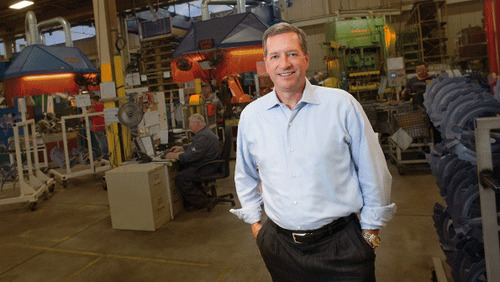Oct 26 2012
AME names four to 2012 Hall of Fame class | Plant Engineering
See on Scoop.it – lean manufacturing
-Honorees have diverse talents and skills, a common commitment to excellence.
See on www.plantengineering.com
Oct 26 2012
See on Scoop.it – lean manufacturing
-Honorees have diverse talents and skills, a common commitment to excellence.
See on www.plantengineering.com
By Michel Baudin • Press clippings 0 • Tags: Awards, Lean, Management
Oct 21 2012

Series of articles in Industry Week about CEOs leading Lean efforts.
See on www.industryweek.com
By Michel Baudin • Press clippings 0 • Tags: Lean for CEOs, Lean implementation, Lean leadership, Management
Oct 18 2012
See on Scoop.it – lean manufacturing
Jon Miller’s take on the similarity between good practices in retail and in manufacturing. He is obviously fond of the bookstore he describes and sees its practices as key to competing with large stores and e-commerce.
He does forget one issue, though: hardcopy books as a product category is going the way of vinyl records. If I were running a bookstore today, I would be worried about finding a business model that works with electronic books.
See on www.gembapantarei.com
By Michel Baudin • Blog clippings 0 • Tags: Lean implementation, Management
Oct 17 2012
See on Scoop.it – lean manufacturing
Tim Heston reports a conversation with the manager of a low-volume/high-mix fabrication shop who wants to implement Lean, without top management support, and starting with 5S, and it’s not working.
Two thirds of the article are not just about 5S but about the tool hoarding behavior of operators. Yes, organizing workstations with commonly used tools makes sense, but, if the manager starts by addressing this head-on, he will have a mutiny on his hands and his bosses won’t back him up.
To be successful, changes in tool management policies should be part of more major changes, such as the implementation of SMED on a machine, or the development of a machining cell. Once you have a team of operators who move between stations and rotate positions, then tools naturally become attached to stations rather than individuals.
What should the manager do? I am currently reading Art Byrne’s Lean Turnaround, and, maybe, getting his CEO to take a look at it might be a good idea to get him or her on board. Next, he should get better advice getting started than focusing on 5S. Much of the literature recommends it because it looks easy. It’s not, and it almost never works as a first step.
See on blog.thefabricator.com
By Michel Baudin • Blog clippings 1 • Tags: 5S, Cellular manufacturing, Lean implementation, Management, SMED
Oct 26 2012
Lean Leadership
Following is the response I posted:
“Willingness and ability to lead” is too generic, and not what I would answer if asked what Lean’s greatest need is.
I look at it from a manufacturing perspective. As Art Smalley pointed out in his 2006 Shingo Prize conference presentation, what goes by the name of Lean in the US gives short shrift to the engineering of production lines. To me, the greatest need still is to put the proper focus on it.
Applications outside of manufacturing are not my focus, but I think that, likewise, the greatest need is to focus on the core of the activity. When the Gilbreths worked on hospitals 100 years ago, they didn’t try to streamline peripheral functions like billing; instead, they worked on the design of operating rooms, and came up with the now standard way, where nurses prepare tools and pass them to surgeons.
Of course, top management must be willing and able to lead, but it has to be in the right direction, to put the focus on the way work is done. And it is tricky.
On the one hand, Art Byrne tells CEOs to personally participate in Kaizen events, which certainly is a way to convey the message that this activity matters.
On the other hand, it can lead the organization to overemphasize Kaizen events, at the expense of other types of necessary actions. It is also impossible for other employees to forget who is on the team.
Generally speaking, whether on a Kaizen even or a Gemba walk, if the CEO expresses an idea on a technical issue, most will agree because it comes from the CEO, and a few will make a point of disagreeing, because it comes from the CEO. In neither case does the idea receive an objective assessment.
Share this:
Like this:
By Michel Baudin • Policies 0 • Tags: Lean, Lean implementation, Lean manufacturing, Management